Bracing for Panjnad Floodwaters: A Village’s Silent Struggle Near Jalalpur
 republicpk.com
republicpk.com
LIAQUATPUR (RepublicPK) — The road to Shahbazpur is narrow, flanked by fields now heavy with the scent of wet earth. It leads to the Panjnad Floodwaters boundary wall, a fragile line between survival and devastation. On Tuesday, our team travelled this route to witness the human cost of Punjab’s ongoing flood emergency.

Along the way, we saw families hurriedly loading their belongings onto tractor trolleys, moving to higher ground. Others herded goats and cattle through knee‑deep water, their animals as displaced as their owners.
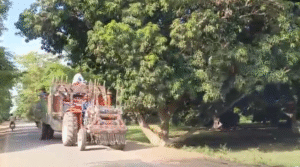
When we reached the boundary wall, the scene was stark: dozens of families living in makeshift camps on the embankment, without proper shelter, sanitation, or drinking water.
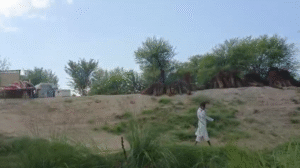
Below, the farmlands lay submerged, a vast sheet of brown water where crops once stood.

In one village, the road had been completely washed away. Two men sat silently at the broken edge, staring at the water. Nearby, a large jaggery pot floated aimlessly until it was pushed to shore, a strange, almost symbolic relic of lives interrupted.

We met Uzair, a young man who had salvaged that pot.
“We pushed it for two kilometers,” he told us. “Sometimes swimming, sometimes wading.”
Private launches ferried goods across the floodwater, while government tractors dumped mud along the river wall in a race against time. Officials confirmed another flood relay is expected within days.
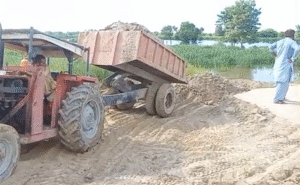
A mobile hospital van made its way toward relief camps, and an army vehicle arrived with rescue volunteers. At one distribution point, water and food were handed out to those who had lost everything.
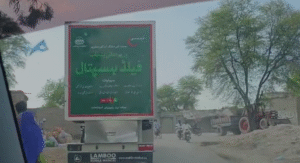
But not everyone was receiving help. Muhammad Bilal, a flood victim from Basti Aaqil, described a grim ordeal:
“Local boat owners demanded ₨20,000 for rescue, still no help. Government offices send us back and forth. I swam two kilometers to get here. Two people were swept away; one nearly drowned.”
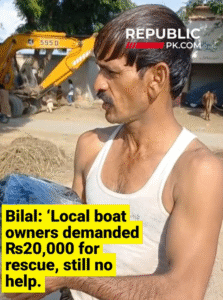
According to official figures, thousands of acres of crops in Rahim Yar Khan and Liaquatpur have been destroyed, with over 52,000 people and nearly 50,000 livestock already evacuated. Relief camps are operational, but the scale of displacement continues to grow.
As the Panjnad Floodwaters press against the embankments, Shahbazpur’s residents remain in limbo, their lives balanced on a wall of mud and stone, waiting for either the river to recede or the next wave to arrive.

